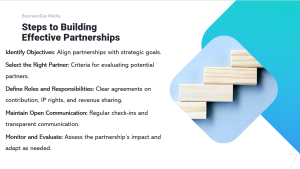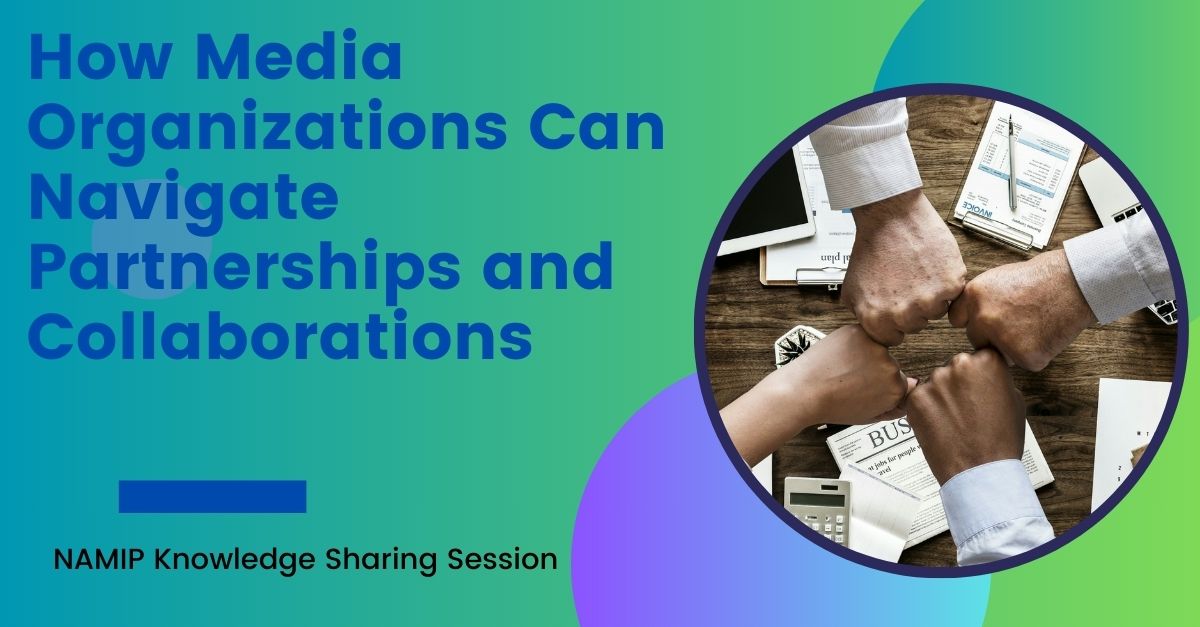By Muhammad Dalhatu
As part of its ongoing knowledge-sharing session, The Nigeria Media Innovation Program (NAMIP) invited two facilitators from Business Day, Ime Enang, Director of BusinessDay Media Foundation, and Caroline Ayeni, Business Development Executive, to lead a workshop on partnerships and collaborations for media organizations. The session provided participants with insights into strengthening media ecosystems through strategic alliances.
An Evolving Media Landscape
The session commenced with a comprehensive discussion on the evolving media landscape, emphasizing the transition from traditional print media to digital content consumption. Attendees gained invaluable insights into the challenges posed by this shift, including financial sustainability, increased competition, and audience fragmentation. Nonetheless, there are multitudes of opportunities for revenue diversification, audience expansion, and innovation through collaborative ventures, especially in the realm of emerging technologies such as virtual reality, artificial intelligence, and blockchain technologies.
To effectively navigate innovative collaborations, media organizations were urged to craft a strategic roadmap defining their approach towards partnerships and collaborations. It’s important to understand how these alliances align with the overall strategic objectives of media organizations. Caroline Ayeni advocated for considering various partnership models, including content partnerships, strategic global alliances, revenue-sharing arrangements, and cross-industry collaborations as means to foster organizational growth.

Photo – NAMIP: BusinessDay Showcasing Steps to Building Effective Partnerships
Importance of Suitability and Risk Management
The discussion also included an analysis of the benefits gained through partnerships, including access to new technologies, content, and expertise, as well as audience expansion, innovation, and risk mitigation. Importantly, participants were encouraged to understand their stakeholders and the relevant issues they sought to address while recognizing the inherent credibility that well-cultivated partnerships could lend to their strategic goals. Additionally, Ime Enang discussed the need for media organizations to recognize and address challenges relating to partnerships. This includes the importance of aligning organizational cultures, nurturing and maintaining trust, managing disagreements, and navigating legal considerations.
She also discussed the importance of selecting suitable partners, underscoring the value of engaging with organizations that have achieved similar or greater levels of success. It was also emphasized that open and effective communication about the value brought to the partnership was essential. Lastly, the session encouraged participants to approach multiple organizations for partnerships, leveraging personal connections and effective communication to ensure successful collaborations.
The workshop provided valuable insights into building successful partnerships and collaborations in the media industry. It emphasized the importance of creating a plan to establish and maintain meaningful alliances. The workshop offered practical advice on choosing the right partners, such as engaging with organizations that have similar or higher levels of success while communicating the benefits of the partnership. The facilitators suggested approaching multiple organizations for partnerships and speaking with key individuals within potential partner organizations to ensure successful collaborations. With this knowledge, media professionals are better prepared to navigate the changing landscape and develop mutually beneficial partnerships, driving newsrooms towards sustainable growth and innovation.

